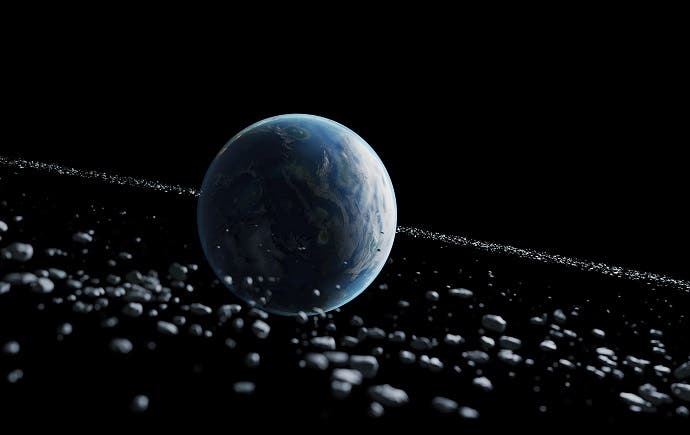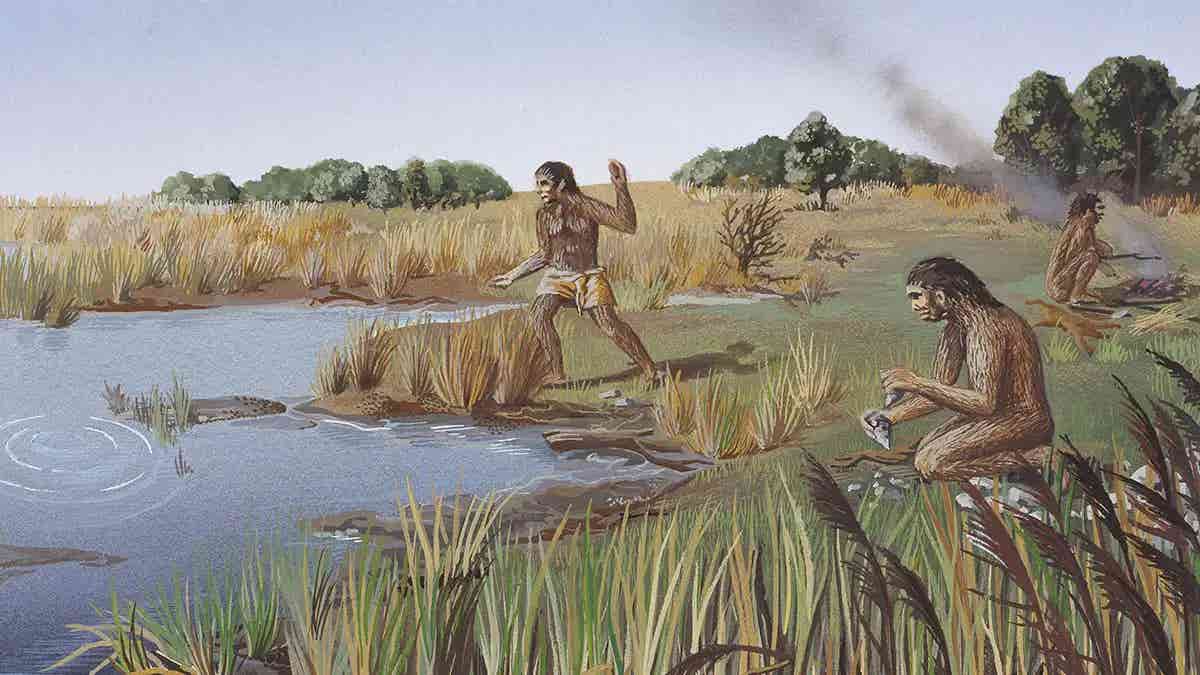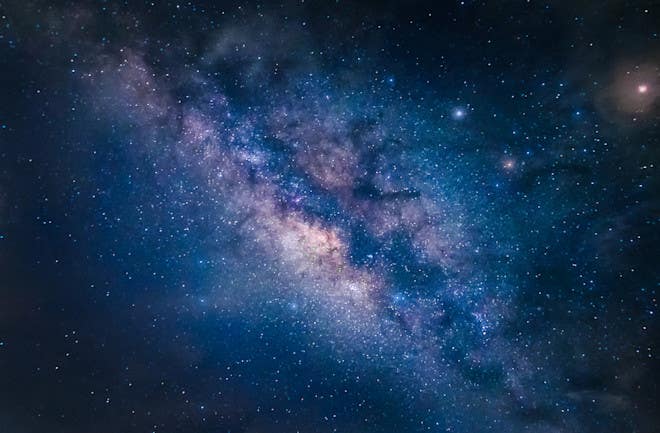Earth had rings 466 million years ago – profoundly shaping it’s history
Discover how an ancient ring system around Earth 466 million years ago shaped climate, evolution, and the Ordovician impact spike.

Researchers reveal Earth’s ancient ring system, formed 466 million years ago. (CREDIT: Oliver Hull)
Interactions between Earth and the solar system have profoundly shaped the planet’s history, influencing evolution and climate.
One striking example is the asteroid impact 66 million years ago that ended the age of dinosaurs. However, new research suggests that Earth experienced a much earlier, equally transformative celestial event—an ancient ring system similar to those of Saturn or Uranus.
This event, dating back 466 million years, coincides with the Ordovician impact spike, a time of unusually intense meteorite activity.
The hypothesis, outlined in Earth and Planetary Science Letters, challenges conventional theories of asteroid impacts. It suggests that a close encounter with a massive asteroid within Earth’s Roche limit caused the asteroid to break apart, forming a ring of debris around the planet.
A Pattern in the Craters
Asteroids typically strike randomly, scattering impact craters across a planet's surface. Yet, researchers analyzing 21 craters from the Ordovician period found an unusual pattern: all were located within 30 degrees of the equator.
Statistically, such clustering is improbable, as only 30% of Earth’s landmass at that time lay within this region. This anomaly suggests a single, concentrated source of impacts—possibly a ring system.
The craters’ distribution was determined using GIS technology and paleogeographic reconstructions. Scientists mapped stable continental regions, such as parts of North America, Africa, and Australia, that could preserve craters.
Related Stories
These geologically stable cratons excluded regions buried under sediment or eroded by tectonic activity. Despite this broad analysis, the impacts clustered unnaturally close to the equator.
“The odds of this pattern occurring randomly are like flipping a three-sided coin and landing tails 21 times,” explained Professor Andy Tomkins, lead author of the study and a geologist at Monash University. “This non-random distribution points to a unique event, such as the formation of a debris ring.”
The Birth of an Ancient Ring System
The study suggests that a large asteroid—about 12 kilometers in diameter—approached Earth and crossed its Roche limit, where gravitational forces caused it to disintegrate. This process likely created a debris ring along Earth’s equatorial bulge, mirroring the rings of Saturn, Jupiter, Uranus, and Neptune.
Over millions of years, the ring’s material gradually rained down, fueling the Ordovician impact spike. Sedimentary rock layers from this period reveal extraordinary concentrations of L chondrite, a type of meteorite material. These findings indicate that the debris originated from a single celestial body, adding further weight to the ring hypothesis.
Climate Impacts of the Ring
The discovery of this ancient ring system extends beyond geology, offering insights into Earth’s climate history. Researchers speculate that the ring could have cast a shadow over the planet, blocking sunlight and triggering global cooling. This cooling aligns with the Hirnantian Icehouse, one of Earth’s coldest periods, which occurred near the end of the Ordovician.
“The idea that a ring system could have influenced global temperatures adds a new layer of complexity to our understanding of climate change,” said Tomkins. “It highlights how extraterrestrial events have shaped Earth’s environmental conditions.”
Further research aims to model the ring’s opacity and estimate the extent of its shadow. This analysis could determine whether the ring alone caused the icehouse or if dust clouds from meteorite impacts also contributed.
A Link to Biodiversity
The Ordovician period is notable for the Great Ordovician Biodiversification Event, a time when life on Earth experienced a remarkable evolutionary expansion.
Some scientists speculate that environmental stresses from the ring system and associated climate shifts may have played a role in this diversification. Cooler temperatures could have spurred adaptation and migration, driving evolutionary changes.
“This potential link between celestial events and biodiversity opens new doors for understanding how life evolves in response to planetary changes,” noted Tomkins.
Future Rings and Implications
While Earth’s ancient ring system likely dissipated after 20 to 40 million years, similar events may have occurred in the past. Mars, for instance, is predicted to develop a ring system within 100 million years when its moon Phobos crosses its Roche limit. Such phenomena underscore the dynamic nature of celestial interactions and their influence on planetary environments.
“The paper ties together several mysteries, from the Ordovician impact spike to climate change and meteorite debris,” said astrophysicist Vincent Eke, who was not involved in the study. “It’s a fascinating hypothesis that reshapes our understanding of Earth’s history.”
Researchers are now exploring how long Earth’s ring system persisted and its precise impact on life and climate. Tomkins emphasizes that understanding such ancient events provides critical context for modern planetary science. “These findings remind us that Earth’s history is shaped by its relationship with the cosmos,” he said.
The possibility of a visible ring around ancient Earth also sparks the imagination. “If you were standing on Earth’s night side and the ring caught sunlight, it would have been a spectacular sight,” Tomkins added.
As scientists continue to study the Ordovician period, this discovery opens new avenues for exploring how extraterrestrial events shape planetary systems.
Could Earth have hosted other rings in its history? The answers lie in the layers of rock and time, waiting to be uncovered.
Note: Materials provided above by The Brighter Side of News. Content may be edited for style and length.
Like these kind of feel good stories? Get The Brighter Side of News' newsletter.
Joshua Shavit
Science & Technology Writer | AI and Robotics Reporter
Joshua Shavit is a Los Angeles-based science and technology writer with a passion for exploring the breakthroughs shaping the future. As a contributor to The Brighter Side of News, he focuses on positive and transformative advancements in AI, technology, physics, engineering, robotics and space science. Joshua is currently working towards a Bachelor of Science in Business Administration at the University of California, Berkeley. He combines his academic background with a talent for storytelling, making complex scientific discoveries engaging and accessible. His work highlights the innovators behind the ideas, bringing readers closer to the people driving progress.



